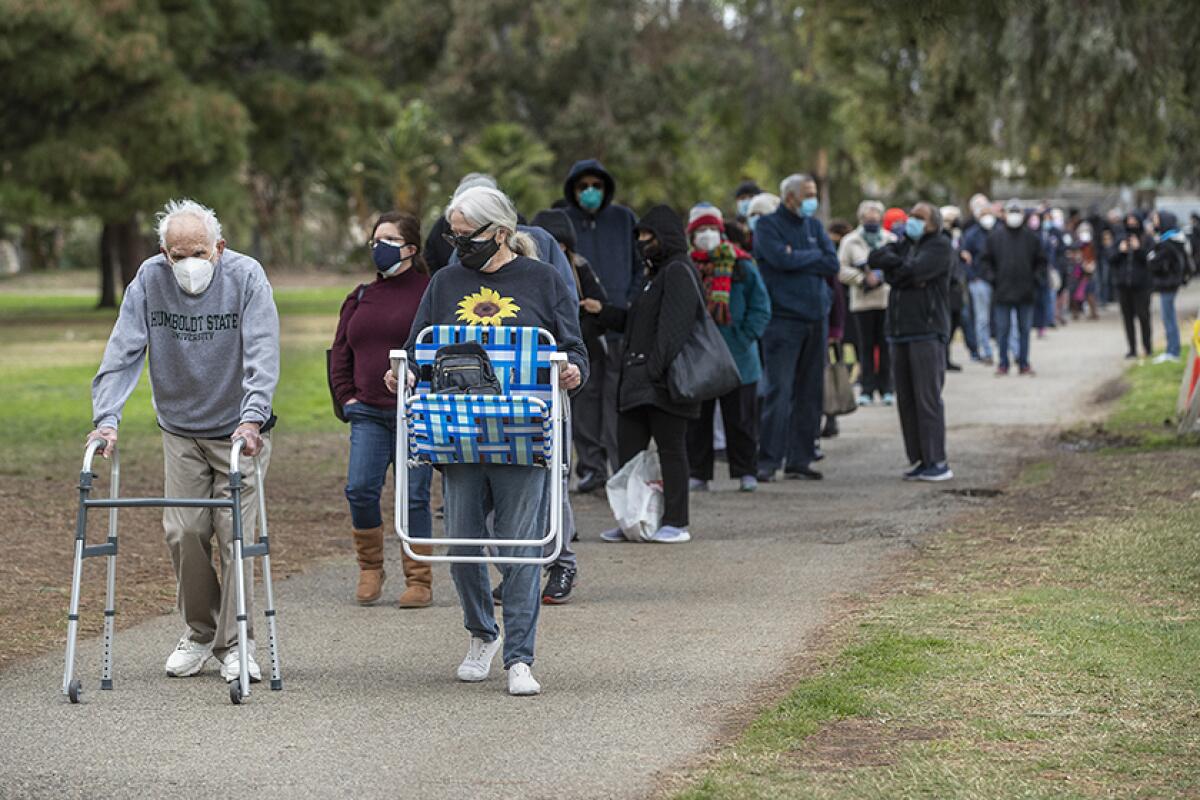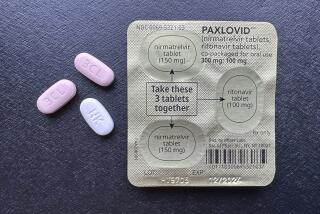Op-Ed: No, Mr. President, the pandemic isn’t over

- Share via
On “60 Minutes” on Sunday, President Biden declared “the pandemic is over.” Well into our third year of battling COVID-19, we all wish that were true. But unfortunately, that is a fantasy right now. All the data tell us the virus is not contained. Far too many people are dying and suffering. And new, worrisome variants are on the horizon.
There are 400 to 500 Americans dying of COVID each day, and that high daily death toll has remained constant for the last six months. In July 2021, we were down to just over 200 deaths per day, half of where we are now. A daily toll in the hundreds is a tragedy, because most COVID deaths could have been prevented by vaccinations, boosters and early treatments.
It’s not just the deaths. There have been more than 2 million confirmed new COVID infections in the last month, and considering the untested and unreported cases, the real number is a multiple of that, most probably at least fivefold. This means the virus is still fulfilling its principal objective of finding a huge number of new or repeat hosts to help spread and perpetuate itself.
Some percentage of these people who get infected or reinfected will develop long COVID, manifesting chronic and frequently disabling symptoms for many months or years. There is still no validated treatment for long COVID. The only way to be certain of preventing it is to never become infected.
In June 2021, we were at our nadir, averaging fewer than 12,000 new confirmed cases in the U.S. per day. That is containment of the virus, a level we can live with, associated with low numbers of hospitalizations and deaths. It is by no means “zero COVID,” the policy of suppressing all infections, which has proved to be unattainable around the world. But it is achievable.
But that didn’t last because new variants came on the scene, first Delta and then the Omicron variant and subvariant family in successive waves. The virus substantially evolved to evade our immune response and become far more contagious. The myth that the virus would ultimately become milder has been fully debunked.
We will remain vulnerable if we pretend the pandemic is over. The United States is a negative outlier for booster shots, with only 1 in 3 Americans having had any booster shot. For people 50 and older, only 1 in 4 have had a second booster (fourth shot) even though repeated studies have indicated a lifesaving benefit from the second booster. The U.S. currently ranks 72nd in the world for its booster rate, which is extraordinary given we are the lead manufacturer of vaccines, were the first to validate them, and are purchasing and wasting tens of millions of shots that cannot find a recipient. Every other rich country in the world has at least double our booster rate.
We should redefine “fully vaccinated” to mean at least three shots, not just the initial two. But the Centers for Disease Control and Prevention refuses to budge on that definition.
We should encourage all eligible Americans to get the new boosters, which are fully aligned with the current BA.5 variant that accounts for almost 90% of cases. Yet the uptake has been disappointing, leaving the nation highly vulnerable. And now the president has declared “the pandemic is over,” which surely will not help to get more Americans boosted.
Two intertwined, troubling issues also illustrate why that statement is disconnected from the science.
First, there is now strong evidence of imprinting, meaning that after being exposed to an earlier strain of COVID-19, we do not mount as strong an immune response to new strains. This gives the virus a further edge. Not only are some new variants more evasive of our immune system, but also our bodies are less capable of taking them on when we do fight back.
Then there are the new variants that have already surfaced, such as BA.2.75.2, which exhibits more evasion of our immune system than any prior version. It is sadly inevitable that this variant, or another one with many new, important mutations, will lead to another wave months from now. Such variants are so distinct from what we’ve been exposed to — what our immune systems recognize after infections and vaccines — that we will be less protected against future waves.
We desperately need a way to block infections and transmission, along with more durable, effective and variant-proof vaccines.
One asset that would encourage more people to get boosted, and would be better at blocking infections and spread, would be nasal, oral or inhaled vaccines, rather than a shot. Two such vaccines have recently received approval in China and India, but the U.S. has not backed any of these programs. Nor has it made any strong commitments to developing second-generation vaccines — not boosters, which are like remodeling a house, but truly new vaccines with more powerful nanoparticles containing antigens or mRNA that could take on the entire sarbecovirus family.
That could be part of how we get to a point of credibly saying “the pandemic is over.” To assert this, it takes a look back after we have achieved a durable, stable, low number of infections and their sequelae for many months.
We will get through this, but we’re not through it yet.
Eric J. Topol is a professor of molecular medicine at Scripps Research and author of the newsletter Ground Truths.
More to Read
A cure for the common opinion
Get thought-provoking perspectives with our weekly newsletter.
You may occasionally receive promotional content from the Los Angeles Times.










